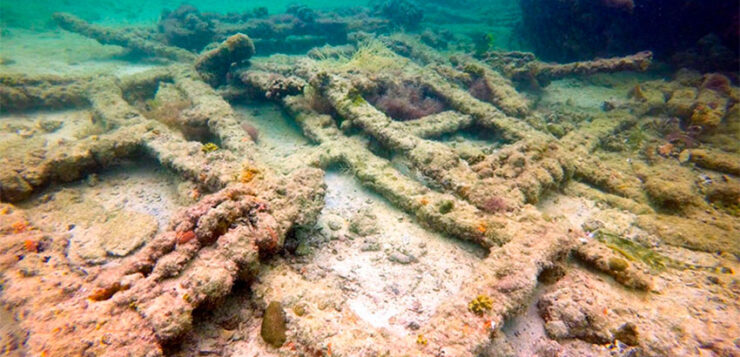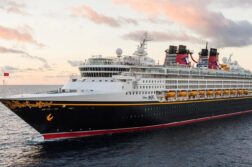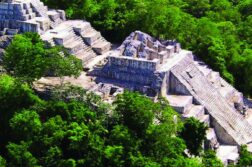Researchers have identified the vessel that went down in 1861

Experts with the National Institute of Anthropology and History (INAH) have identified a steamship that sank off the Yucatán Peninsula in the middle of the 19th century as a vessel that transported Mayan slaves to Cuba to work on sugar cane plantations.
The shipwreck of La Unión, a paddle-wheel steamship owned by a Spanish company that operated out of Havana, was discovered less than four kilometers off the coast of the Gulf of Mexico port town of Sisal, Yucatán, in 2017 by underwater archaeologists who were assisted by local residents.
The ship sank in September 1861 after it caught fire shortly after leaving Mexico for Cuba.
The underwater archaeologists initially named the ship Adalio after the grandfather of a local fisherman who guided them to the wreck site, INAH said in a statement on Tuesday.
The experts soon identified it as a steamship that was built in the mid 1800s. The base of its wooden hull was well preserved by sand that covered it and several other parts of the vessel were still in relatively good condition despite spending more than 150 years underwater.
Archaeologists also discovered everyday items that had been onboard the ship including brass cutlery and fragments of glass and ceramic bottles.
After a series of dives in 2017, experts with the INAH Underwater Archaeology Department (SAS) began searching through archives in Mexico, Cuba and Spain for records that might contain information about the sunken vessel.
After three years, they gathered enough information to confirm that the wreck they had found was of La Unión, INAH said. It is the first ship that transported Mayan slaves to have been located and identified.
Helena Barba Meinecke, head of the Yucatán office of the SAS, explained that the archaeologists were able to conclude that the ship was La Unión because newspaper articles and reports said the vessel had sunk in the area where it was found after its boilers exploded and it caught fire.
The archaeologists had discovered parts of exploded boilers and had noted that the ship’s wooden hull showed signs of fire damage.
During their research, the INAH experts learned that La Unión had been authorized to carry out trade voyages between Cuba and Mexico and that it docked in Sisal, formerly an important port, as well as Campeche, Veracruz and Tampico.
It carried products such as henequen fiber, tanned leather, timber and deer skins to Cuba as well as passengers who traveled in the ship’s first, second and third classes.
In addition, the INAH experts found that La Unión transported Mayan people who had been either captured or tricked into believing that they were traveling to Cuba as free settlers and that land awaited them there.
The ship’s commanders worked with slave traders in Mexico even though slavery had already been outlawed. Between 1855 and 1861, a period during which the Caste War of Yucatán between Mayans and the European-descended population was taking place, an average of 25 to 30 slaves were sent to Cuba per month on La Unión, INAH said.
“Each slave was sold for up to 25 pesos to intermediaries and they could resell them in Havana for up to 160 pesos for men and 120 pesos for women,” Barba said.
A year before it sank, La Unión had been found transporting 29 Mayan people believed to be slaves including children aged as young as 7. Just months before the tragedy, then president Benito Juárez had issued a decree against the forced removal of Mayan people from their land.
But the Mayan slave trade continued.
It wasn’t until after La Unión sank in 1861 that the Mexican government increased its search efforts at ports to prevent the trafficking of people to Cuba, INAH said.
Half of the 80 crew members and 60 passengers on board perished after the ship caught fire and sank, the institute said, adding that the number of Mayan slaves who died are not included in those figures because they were considered goods rather than people.
Mexico News Daily





